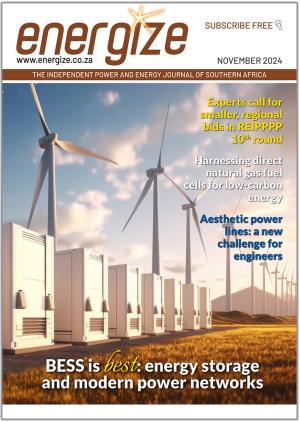South African engineering firm, Lesedi Nuclear Services, has joined over 130 companies in supporting the goal of tripling global nuclear energy capacity by 2050 by signing the Net Zero Nuclear Industry Pledge (NZNIP) on the sidelines of Africa Energy Week, held in Cape Town from November 4-8.
In South Africa, Lesedi is contemplating two potential paths for the future: one option is to establish a consortium of local suppliers capable of supporting nuclear projects and serve as the owner’s engineer for the procurement and construction of new nuclear facilities. The other option is to partner with the selected original equipment manufacturer (OEM) for nuclear projects. “The direction we choose will depend on the structure of the request for proposals (RFP),” said Derik Wolvaardt, Senior Executive for Nuclear at Lesedi.
The NZNIP, launched at COP28 and led by the World Nuclear Association (WNA), represents a significant push toward building a clean energy future. “Dispatchable nuclear power, along with renewables, provides the only sustainable combination of electricity generating technologies to achieve this crucial objective,” said Wolvaardt.
Lesedi’s contributions to nuclear advancements in South Africa include hardware upgrades and safety assessments at the Koeberg nuclear plant, which enabled a 20-year extension of its operating licence. The company also intends to participate in the upcoming RFP for 2 500 MW of nuclear energy capacity, expected to be reissued in 2025 after its withdrawal earlier this year.
Extending the lifespan of existing nuclear plants globally will be key to maintaining capacity through 2050, Wolvaardt said. “Tripling nuclear capacity by 2050 will require overcoming challenges such as establishing resilient supply chains, strengthening international partnerships, creating supportive policy frameworks, cultivating a skilled and diverse workforce and achieving standardisation across regulatory and industrial practices.
“Although a more detailed analysis is needed to assess the production capacity of the six major OEMs worldwide and to evaluate the possibility of extending the life of existing reactors to 60 or even 80 years, the current global nuclear construction projects suggest that reaching the 2050 goal is achievable.”
By the end of 2023, 418 reactors with a net capacity of 371 540 MWe were operational, with 59 reactors with a net capacity of 61 637 MWe under construction, Wolvaardt said. “To triple our capacity, we will need an additional 740 000 MWe, assuming that the lifespan of most existing plants can be extended beyond 2050. With a standard reactor size of 1 200 MWe, we will require 600 new reactors to be operational by 2050. This means that we need to bring 24 new reactors online each year until 2050.”
China National Nuclear Corporation is building 29 reactors, with plans to ramp up to 60, completing each build in five years. Russia’s Rosatom has 26 reactors in progress. “With these numbers, 24 reactors a year is within reach,” Wolvaardt said.















